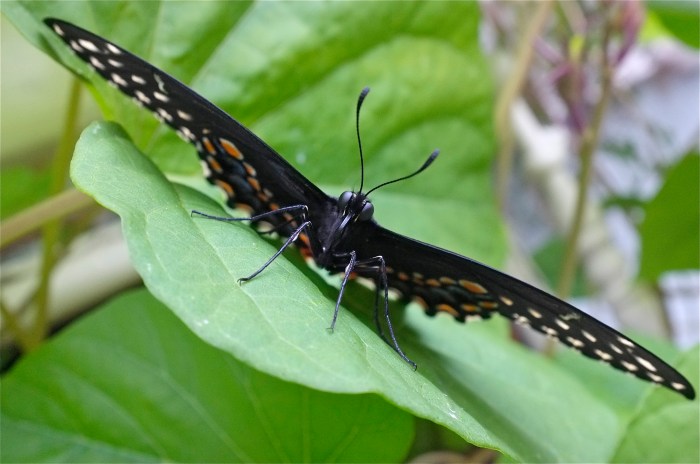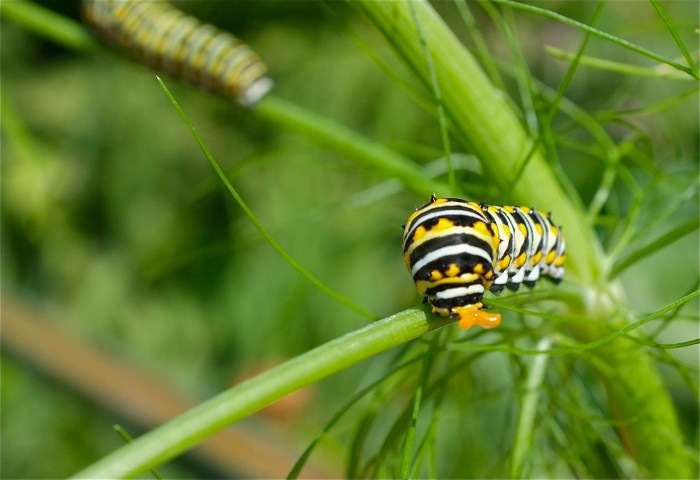On August 16th at the Berkshire Museum they’ll be showing a double header of sorts. Earlier in the afternoon at 2:00pm is a presentation of my program on how to attract butterflies and pollinators to your garden, titled “The Pollinator Garden,” followed by a showing of my film Life Story of the Black Swallowtail Butterfly, followed by a Q & A. The event is part of the “Butterflies” exhibit currently on display at the Berkshire Museum in Pittsfield. I hope you can come join me!
In the above photo, the orange horn-like structure at the top of the caterpillar’s head is called an osmeterium. When the caterpillar is distressed, it everts the osmeterium. The osmeterium is thought to be a mimic of a snake’s tongue and is a defense against would-be predators such as birds. Additionally, a horrible smelly odor is released from the osmeterium, which can be smelled from a distance of up to ten feet away, and is yet another defense mechanism!
See previous GMG posts about the “Butterflies” exhibit here.
Museum Map to Berkshire Museum Provided by GMG FOB Catherine Ryan








